Want Not: A Dialogue on Sustainability with Images
Karen Pinkus, Cameron Tonkinwise

CT: Song Dong’s Waste Not is the artist’s mother’s house with everything that was in it during a period of the Chinese government’s edict to “waste not.”1 It captures a sense of the volume of materials over time passing through homes, what is not normally visible because we have surprisingly effective waste concealing systems. It makes apparent the absurdity of using long-life materials for short-life uses. It foregrounds capitalism (via negative socialism), but also the emerging global consumer class in China. It also points to the constipated error of a steady-state version of sustainability. Living involves flows, whereas hoarding leads to death—the piece is a work of mourning by Song Dong and his mother for his father/her husband.
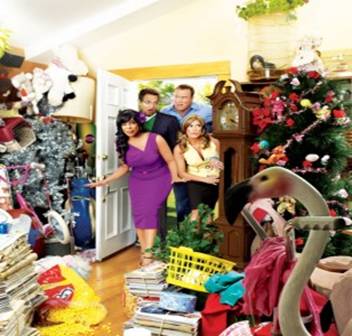
KP: I didn’t see the exhibit but it makes me think of two things. First, the Western analogue has to be the estate sale, when the children lay out all of the goods (tchotchkes) that they don’t want after their parents die. Usually they hire professionals to handle the sales. If you go to an estate sale you see a whole person’s life laid out before you (minus the really valuable objects, if any). Sometimes you find, in addition to books, utensils and costume jewelry, prosthetic limbs, walkers, unopened boxes of adult diapers or elder potties. The estate sale is a symbol of anti-sustainability, not due to lack of resources as we might normally think, but excess that—precisely—can’t be handed down to the next generation. In this sense, the estate sale thwarts the temporality of sustainability and it reminds us that the term “sustainable future” (even as we will inevitably use it) is both an oxymoron and a horrific monster.
Song Dong’s piece also reminds me of the various hoarding reality television shows that are popular now. On Clean House the crew forces pathological clutterers to sort through their goods and then sell them at garage sales. In Song Dong’s piece as well as in these shows, it strikes me that labor is completely effaced. The home is the place where you keep consumer items that act almost as a hedge against flows of any sort—energy, labor power, money, desire. In Clean House the actual work of transforming the home is edited out. While it is going on the property owners are holed up in a hotel to contemplate the error of their ways or engage in soul-searching. On their return they are invited to take off their blindfolds and open their eyes. The reactions—conditioned by previous viewing of reality shows—are always the same.

CT: If you were to try to categorize all the possessions from an estate sale, or the death premonition that is a reality TV show, as a proxy for the average global consumer household’s possessions according to their purchase reasons, what would you find? I mean, let’s say it were possible to map purchases on the following axis:
| Potential/Futural Use | ||
| Instrumental | Expressive | |
| Actual/Current or Past Use |
Would most of the possessions lie to the right or to the left, and above or below the horizontal middle? A yard sale tends to comprise a lot of stuff from the top left: unused breadmakers, tennis rackets and guitars (though with the latter, we are drifting right). If you tried to map instead the net ecological impacts of those possessions, here would the greatest impacts be? For instance, toilet paper, per roll, does not have an enormous ecological impact, but there might be a lot of it in a household at any one time, and particularly over a period of time; whereas there would be only a tiny weight of gold, but even a gold ring and a couple of necklaces have an enormous ecological impact. Perhaps then the ecological impact map for all those household goods would be more toward the bottom left? And if you took into account purchases of material resources that occur more indirectly, outside of shopping—whether regularised consumables shopping (e.g., toothbrushes and apples), at (super)markets, or less regular durables shopping (e.g., humidifiers, outdoor furniture), at malls and “big box” centers—by which I mean, utilities, “purchases” of fossil fuels for energy? This might manifest more things to the bottom right—television, computers, transport to holidays or entertainment, etc.
Each use of a durable amortizes its ecological impact, which would suggest that everything above the middle horizontal line has a greater ecological impact. But every use of energy, or an energy-consuming device, creates significant ecological impacts, counter-balancing the top.
What is perhaps most significant about this thought experiment—though it is something that could be done more or less accurately,2 if only we could agree on quantitative measures of ecological impact, which are value decisions rather than establishable facts—is the recognition that everyday existence, at least materially, is not merely in the here and now. In terms of household ecological impact, a significant portion suggests “potentiality before actuality.”
This points to the extent to which the household’s organizing principle is autarky: stockpiling, just in case, the very opposite of just-in-time. Yet this desire for self-sufficiency, which leads to houses packed with aspirational stuff—that dress for which a formal party occasion might finally arise, those cross country skis that might become necessary next time a snow storm halts motorized transport, this slab of tins of beans that will keep us alive when there are fresh water wars—is also the organizing principle for most approaches to the ‘sustainable house:’ the zero impact house, that generates its own power, collects its own water, composts its own waste.
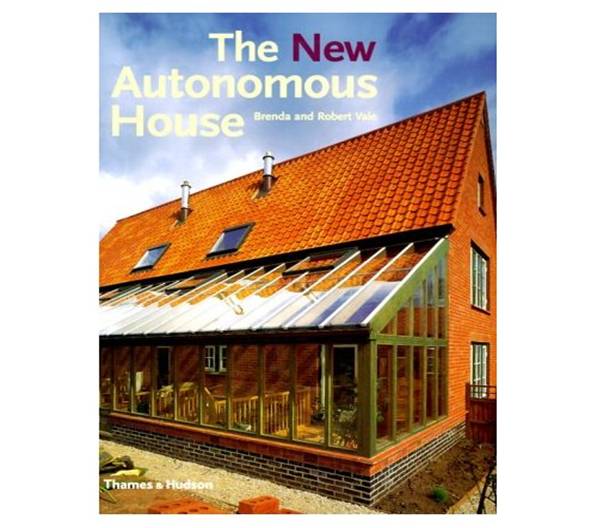
Brenda and Robert Vale are famous for creating and then promoting a peri-urban house that is energy and water self-sufficient. They have more recently become famous again for publishing Time to Eat the Dog: The Real Guide to Sustainable Living (Thames & Hudson, 2009), a book that pieces together life cycle assessment data that result in claims like: it’s more sustainable to be a vegetarian driving an SUV than a hamburger eating bicyclist; and it’s more sustainable to play golf than to own a dog. The title of the book refers to their claim that the most sustainable pets are vegetarian ones that you can eat when they die—like hamsters. It was this claim that confirmed the paranoias of neoconservative bloggers in the US (though the book is not released in the US)—greenees want to dictate whether or not you have the liberty to own a dog.
And the net ecological impact is often the same as the hoarder’s house. The embodied energy and pollution involved in all the small scale technologies needed to reinforce this vision of the autonomous “suburban” house will often not be overcome by the cleanness provided by such technologies over their lifetime.
Sustainability urgently needs to be recast as interdependence rather than independence, resilient networks of social support, whether commercial services or communal resource pools, rather than walls of stuff preventing my need to engage with others for my future.
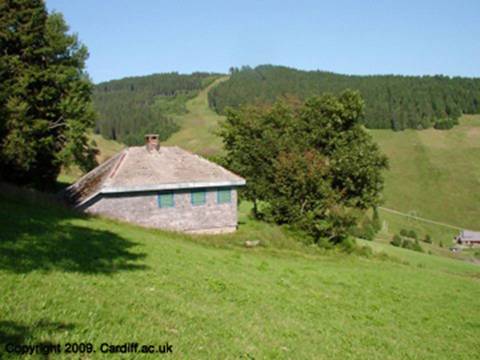
KP: Your discussion above touches on a lot of fascinating points. The convergence of your four-fold system of measuring ecological impact and your critique of a consumer-based and instrumental sustainability brings me to Heidegger. There’s a wonderful little book, Heidegger’s Hut, by the architect Adam Sharr (MIT Press, 2006) that provides a counterfoil to the sustainable house. Built into a hillside in the 20s, for many years this Black Forest retreat lacked electricity or telephone. It was, by nature and not by calculation, low impact. Sharr doesn’t try to conflate artificially the Heideggerian four-fold (earth, sky, divinities and mortals) with the four rooms of the very basic retreat where the philosopher wrote many of his great texts.
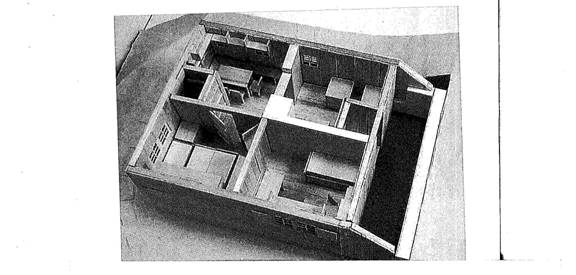
Nor does he suggest any sort of easy assimilation of thought (or more specifically of Heideggerean “dwelling”) with a retreat from the city into the country.3 Withdrawal from academic and social life in the city into the hut is not about passivity any more than it is about a self-satisfied existence off the grid. Heideggerean thought reveals the ultimate inauthenticity of the Brundtland or dictionary definition of sustainability, which depends on a fixed, calculated notion of “the present” as static. “To enjoy resources in the present” one would have to know what “the present” is; and to believe that consumption in that “present” is calculable, measurable and acceptable. The pretence that we do know and can fix our “present” as the exterior (not tied to Being) measure for “future generations” is undone by Heidegger and a number of key thinkers in his wake.
For me, Heidegger helps us think beyond any aestheticization of the landscape or Nature that would be associated with a kind of unthought green consumerism. Nor is it a romanticization of country life. Rather, the hut was, as Sharr describes, a place where Heidegger could think and write, and experience the changes in season in a direct manner. In contrast, today’s sustainable building is a building, Heidegger might say, but is it a dwelling? “The old word bauen which says that man is insofar as he dwells, this word bauen however also means at the same time to cherish and protect, to preserve and care for, specially to till the soil, to cultivate the vine.”4 In “Building Dwelling Thinking” Heidegger asks us to imagine a two-hundred year old farmhouse in the Black Forest. The house is ordered by letting the four-fold be in “simple one-ness.” However, he does not advocate a return in the modern age to the building of such houses. Rather, this old farmhouse “illustrates by a dwelling that has been how it was able to build.” Building belongs to dwelling, but the suburban sustainable house seems to be a building without dwelling, building that does not grow out of dwelling or for the sake of dwelling. It is a low-emissions shell that anyone (with a green conscious) is invited to purchase and fill with prefabricated “sustainable” furniture.
Now, Heidegger may seem to fail to fulfil your call for a more communal or interdependent sustainability and he has certainly been the (perhaps too easy) target of critiques by communist thinkers in the broadest sense (see Hardt and Negri, Commonwealth, for instance). It’s easy to see how a notion of “dwelling” fails to account for either “spontaneous” modes of conservation or the excesses of the “the new frugality,” identified by trendspotters in the city.5 But Heidegger’s hut is communitarian—much more so than the low-impact home—because it is built (and thought) from dwelling, from Being, rather than from a calculation about the housing market by individual investor/builders/developers, no matter how green their consciences.
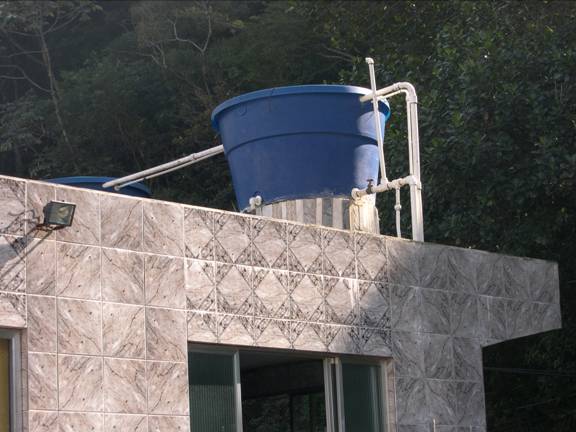
CT: The following images refer to one aspect of the substantial energy efficiency retrofit undertaken on The Empire State Building recently; this was the refurbishment of the windows. Overnight, workers would remove the windows from an office in the building, take them to a temporary factory in the basement of the building where special reflective/insulating films were applied to the windows that were also cleaned and resealed, and then re-insert the windows before the office workers commenced the next day.)
Certainly the example of Heidegger, and in particular the difference between dwelling and the buildings within which dwelling more or less takes place, makes clear that sustainability is a how not a what; it is matter of how I live, with what or in what I live. Apart from the fact that the adjective “sustainable” should only ever be used comparatively, rather than as an absolute (i.e., there is only ever “more or less sustainable than”) “sustainable” should always be followed by the word “use”; there are no sustainable products or buildings, only (more or less) sustainable uses of products and buildings.
However, Heidegger, and particularly this Heidegger who was philosophically explicit about “staying in the provinces,” foregrounds what is no longer an option for any of us. The pressures are becoming such that fertile land that is not being used for food production, watersheds or species conservation is no longer tolerable, especially not for the soon-to-be privileged few with ongoing access to fossil fuel-based transportation infrastructures to get to and from their holiday, or writing, retreats.
The task for today, the challenge that is the “how” of more sustainable living, is to find “dwelling” within dense cities. So 3 related points.
1) Heidegger was never alone in the hut, in the solitude that affords the discernible presencing of being and time. The footprint of the hut is able to be as small as it is because living (cooking and cleaning for example) is to a large extent outsourced. Someone, most likely a woman and/or local poor peasant, brings Martin meals, clean sheets, towels and clothes, etc, while he prepares lectures on the essence of human freedom. From a more calculative perspective, purchasing services when needed, rather than just-in-case ownership of goods, can lead to significant gains in environmental performance, mainly because the goods used to deliver services remain in domains (businesses rather than households) that have incentives to invest in efficient, well-maintained and then end-of-life-component-and-material-recovered goods. But that ecological sustainability is rarely coupled with the social sustainability of appropriate levels of recompense for such all the service workers sustaining the creative class.
Dense urban environments are made for sustainable services, freeing tight living space of products, and providing the efficient markets that make services more affordable. Being serviced is not the objecthood problem of buildings that Heidegger worried about. But is it too (inter)subjective to be a source of dwelling?
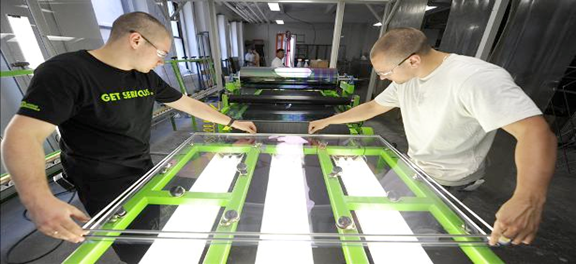
2) Heidegger’s philosophy is one of finitude, that what is present before us as everyday objects, is not all that there is, that things are merely temporary holders for being, durations of presencing. Everywhere, for everything, there are still also always absences, withdrawals, concealing. At a more ontic level, this suggests that all things move through time. A chair might appear to be self-sufficiently a thing there before me (an ob-ject), but it is such only in the more or less now. It has not always been there in that way, nor will it always be there in that way. Its wood and steel only seem to be temporarily unchanging. As a result, enduring in its “being there in this chairly way” is something that must be actively pursued; it is the task of ongoing maintenance (or preservation as Heidegger calls it in “The Origin of the Work of Art” and elsewhere). The axe persists as an axe only by having its metal head sharpened and then changed two or three times, and the handle being oiled and then changed two or three times.
Being “in the provinces” is a mode of being that usually incorporates habitual rituals of repair and maintenance into the practice of everyday life. This is certainly not the case in cities. The nature of their construction, the materials used (steel, concrete, glass), the density of the design, and the very time-impoverishing nature of city living, make active preservation both difficult and seemingly unnecessary. This is what the innovative “factory-in-the-basement-for-overnight-retrofits” service of the Empire State Building foregrounds. If we are to have more sustainable cities, we need cities that more explicitly take heed of their need for being sustained. Urban buildings need to be designed, or redesigned, with better access to envelope and services, to facilitate maintenance, repair and upgrade. Such more sustainably usable buildings would manifest their openness to changeability, and to the fact that their unchangingness is the effect of sustained work, by those who dwell amongst them.

3) Cities throughout modernity have been cast as machines. This characterization alludes to the more sustainable efficiencies that can come from urban densities. But throughout modernity cities have also been symbols for excess, for aneconomic pleasure and affective spectacle. Compared to the cosmopolitanism of urbane life today, Heidegger’s mountain-top Hutte looks exactly like the sort of back-to-the-land austerity that neo-conservatives decry about environmentalists.
Sustainability needs to articulate a relation to transgression and affect, not just as a rebranding exercise, but in order avoid being yet another mode of the biopolitics of bare life. Allan Stoekl (in Bataille’s Peak: Energy, Religion and Postsustainability [Minnesota: Minneapolis University Press, 2007]) has recently attempted a productive provocation: What must sustainability learn from Bataille, the philosopher of excess? Stoekl’s answer is that only a sustainability that can articulate with the human need to engage in the gratuitous can escape the very the cause of societal unsustainability: the drive for efficient productivity. Or to put it the other way around, being frugal is just another calculative strategy for turning the entire world into a resource for the future. By contrast, being slow, even slack, can be much more socially as well as ecologically sustainable. Cities are full of these redundancies and wastages, not all leisurely, many requiring strenuous effort (like burning the muscles in your leg cycling amongst filthy traffic).
A sustainable future cannot be just a peacefully, resource efficient, clean and shiny once-and-for-all world. To sustain humans, it must contain its own challenges, its own diversities, its own changing dynamic.

Notes
Karen Pinkus is Professor of Italian and Comparative Literature at Cornell University where she is also a member of the graduate field in studio art and a co-leader of the Society for the Humanities Sustainability Initiative. She is working on a book, tentatively titled Poetic Dwelling: The Humanities Confront Climate Change. She is the author of several books, the most recent of which is Alchemical Mercury: A Theory of Ambivalence (Stanford, 2009).
Cameron Tonkinwise is currently the Associate Dean for Sustainability at Parsons The New School for Design. His teaching and research integrate the philosophy of design with a concern for sustainability. His work focuses on the design of commercial and nonmarket systems for shared product use, exploring how the emerging discipline of service design might facilitate the development of less-materials-intense economies while negotiating issues of perceived convenience and autonomy.
The policy, “wu jin qi yong,” translates as “waste not.” The piece was exhibited at the Museum of Modern Art in New York in 2009.
See for example Eva Heiskanen & Mika Pantzar “Toward Sustainable Consumption: Two New Perspectives” Journal of Consumer Policy Vol.20, No.4 (Dec 1997) who draw on research that calculates the “slave days” (a unit of energy equal to the healthy daily calorific intake of a person) of leisure activities like reading the newspaper and playing golf.
And certainly Sharr understands the complexity in the very notion of withdrawal in relation to Heidegger’s politics. “Why do I stay in the Provinces?” in Thomas Sheehan ed, Heidegger: The Man and the Thinker (Chicago: Transaction Publishers, 1981).
Martin Heidegger, “Building Dwelling Thinking,” in Poetry Language Thought, Trans. Albert Hofstadter (New York: Harper Perennial, 1971), 147.
See “Frugality Is The New Chic,’ http://www.npr.org/templates/story/story.php?storyId=99654933